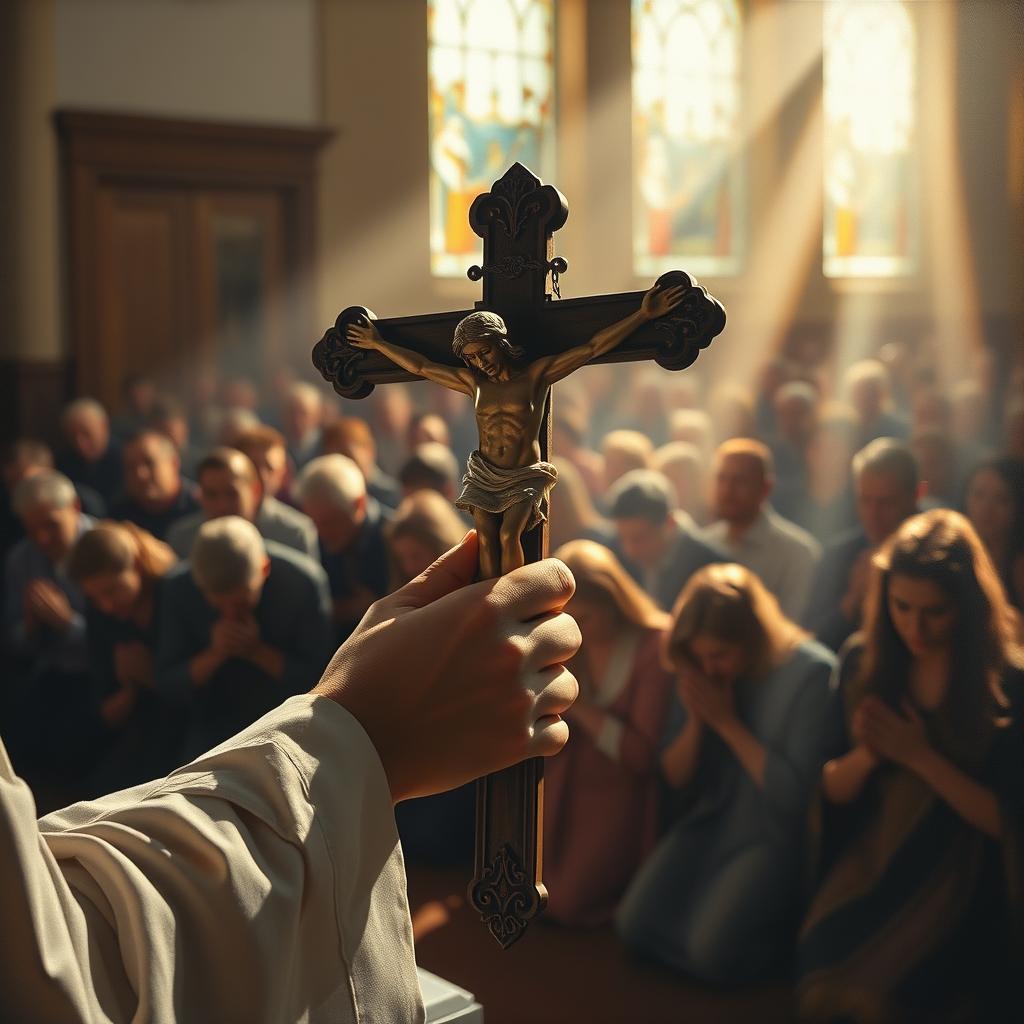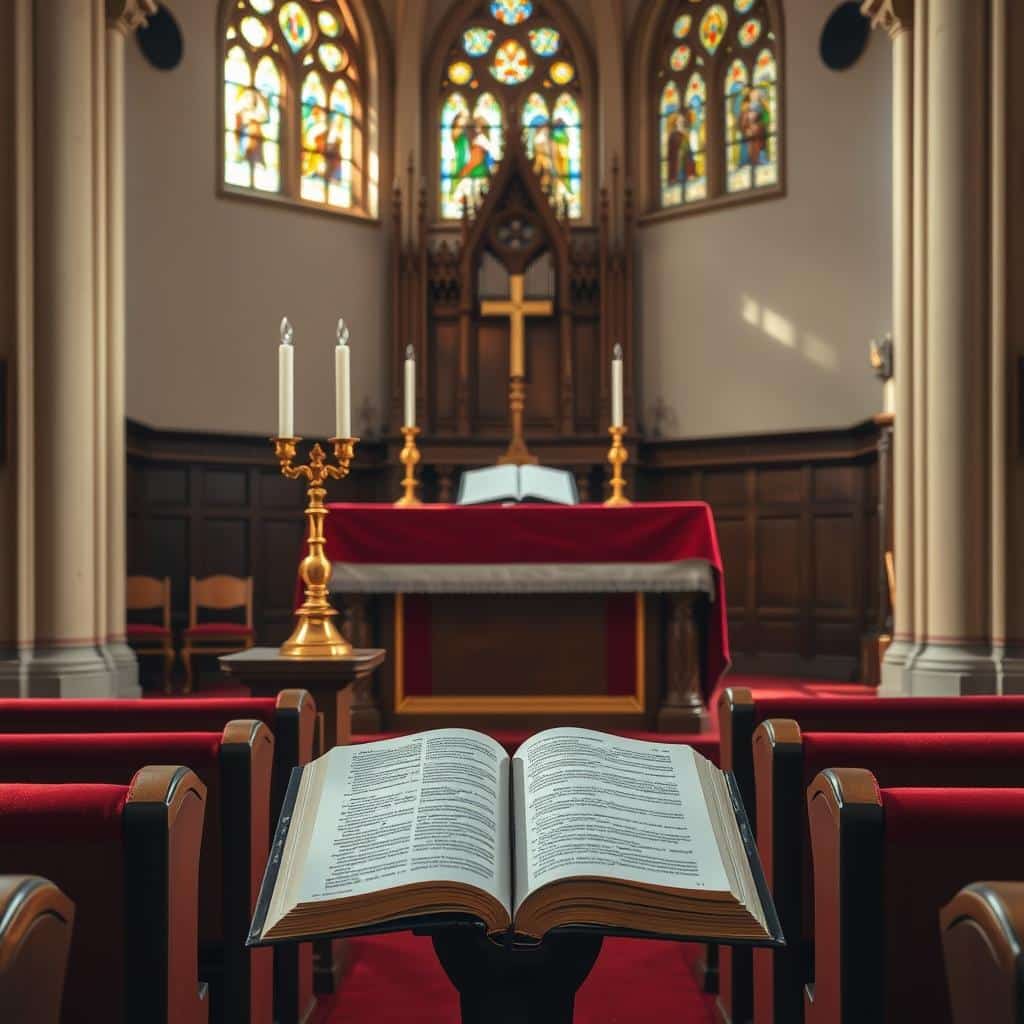Good Friday homily invites us to reflect on the readings that show Christ’s ultimate sacrifice. The liturgy focuses on Isaiah 52:13–53:12, Psalm 30, Hebrews 4:14–16; 5:7–9, and John 18:1–19:42, all found at www.universalis.com. These texts explain the paschal mystery—the divine plan of redemption through Jesus’ death and resurrection.
On this day, the color red symbolizes faith’s fire and martyrdom. The Gospel tells of Jesus’ arrest, trial, and crucifixion. It includes the crown of thorns, nails, and the mocking title “King of the Jews” on his cross.
Isaiah’s prophecy of the Suffering Servant is fulfilled here. Jesus bears humanity’s sins with obedience. His final words, “It is accomplished,” mark victory over death.
Mary, as the new Eve, stands at the cross, contrasting the first Eve’s disobedience. Peter’s denial and later repentance show grace’s power to transform failure into faithfulness. Pilate’s washed hands and the crowd’s demand for crucifixion highlight humanity’s role in the Passion.
Good Friday homily guides us to ponder Christ’s sacrifice and its connection to Easter’s hope. Each reading calls believers to see redemption in suffering, trust in divine justice, and the courage to embrace grace amid life’s trials.
Candle Making Made Easy: Create Stunning Decor with Our Guide
Easter Baking Ideas: Festive Treats to Make at Home
Embracing the Spiritual Significance of Good Friday
Good Friday is a day of sacrifice and hope. For centuries, Christians have seen it as a key part of their faith. It connects old traditions with today’s devotion.
The Easter Triduum is a three-day journey from darkness to light. It ties this day to history and invites personal change.
“He was despised and rejected by others; a man of sorrows, and acquainted with grief.”
This verse from Isaiah 53:3 shows Jesus’ journey, as told in Mark. Early churches saw Easter vigil as a mix of mourning and joy. It shows how death can lead to new life.
Historical Foundations of Good Friday
Mark 15:16-20 tells of the soldiers’ mockery, showing Christ’s pain. Yet, this pain has a deeper meaning. The Easter Triduum, from Maundy Thursday to Easter Sunday, shows Christ’s journey from betrayal to victory.
Old liturgies saw the cross as a symbol of freedom. It turned a Roman punishment tool into a sign of liberation.
Personal Reflections and Inspirations
Howard Thurman’s writings see Christ’s sacrifice as a call to empathy. The homily encourages us to show His compassion. Hebrews 4:15 reminds us He understands our weaknesses.
Embracing this legacy means finding strength in vulnerability. The cross challenges us to carry our burdens with courage.
Scripture and tradition come together on this day. They tell us that love can overcome suffering. As the Passion story ends, it opens a door to renewal. This truth is as important today as it was then.
Isaiah’s Suffering Servant: Lessons from Reading I Isaiah 52:13—53:12
At the heart of reflections on good friday is Isaiah’s Suffering Servant. This passage, I Isaiah 52:13–53:12, speaks of a figure who will be greatly honored despite being disfigured. This is a foreshadowing of Christ’s crucifixion and resurrection. His willingness to suffer for others mirrors Jesus’ sacrifice on the cross.
“But he was pierced for our transgressions, crushed for our iniquities; the punishment that brought us peace was on him, and by his wounds we are healed.” (Isaiah 53:5)
Scripture shows clear connections between Jesus and the Servant. Jesus’ clothes were divided by soldiers (John 19:23–24), just as the Servant’s spoil was divided (53:12). The piercing of his side (John 19:34) also matches the prophecy’s promise of atonement. These details show that Good Friday’s events were not random but part of a divine plan.
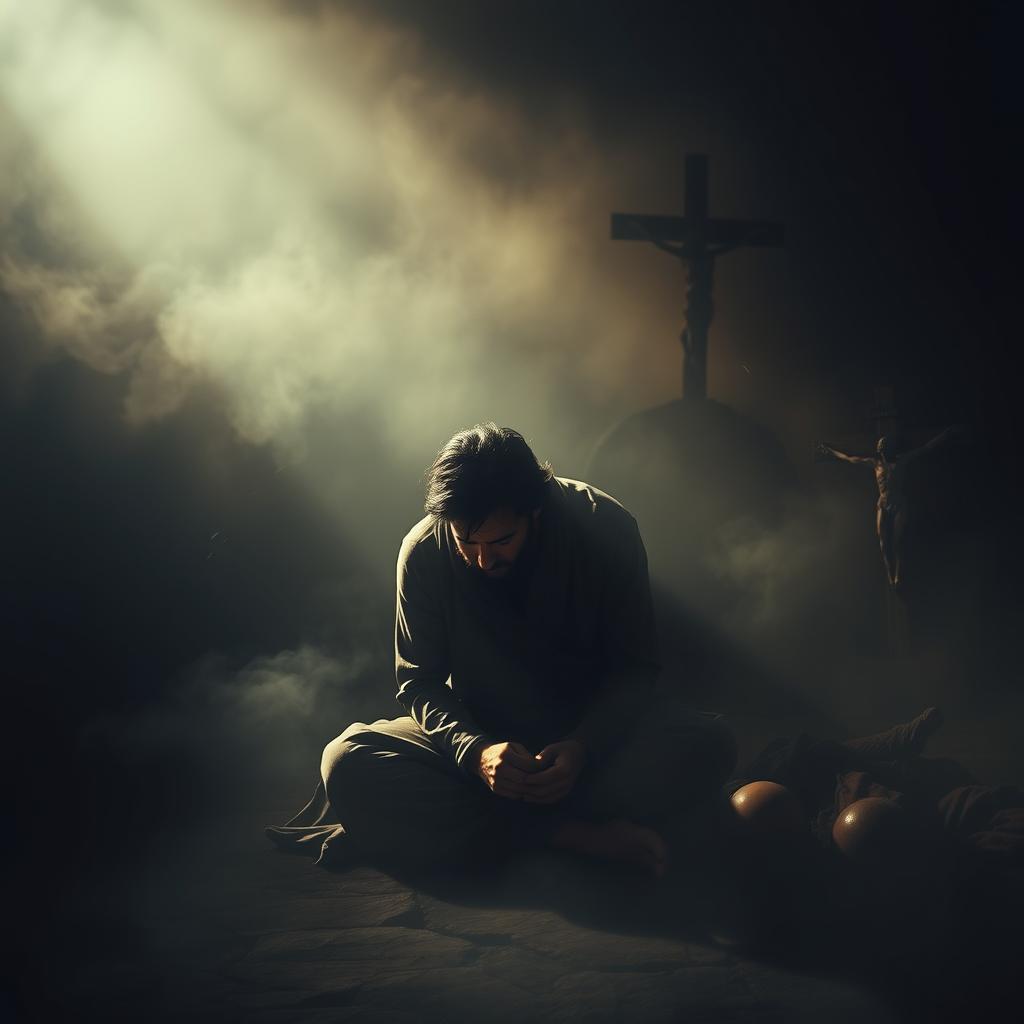
Today, many sermons focus on the Servant’s quiet endurance as a model for us. Pope John Paul II taught that the Cross calls us to face suffering with hope, just like the Servant. The hymn “Lift High the Cross” also encourages us to see suffering as a way to redemption. During reflections on good friday, these verses encourage us to find strength in solidarity with Christ’s journey.
Deepening Faith Through the Responsorial Psalm
During Good Friday message reflections, Psalm 31 stands out as a plea for God’s mercy. The psalmist’s honesty in verses like “In you, O Lord, I seek refuge” (31:2) shows our struggle to hold onto hope. This text encourages us to share our fears, knowing God hears us.
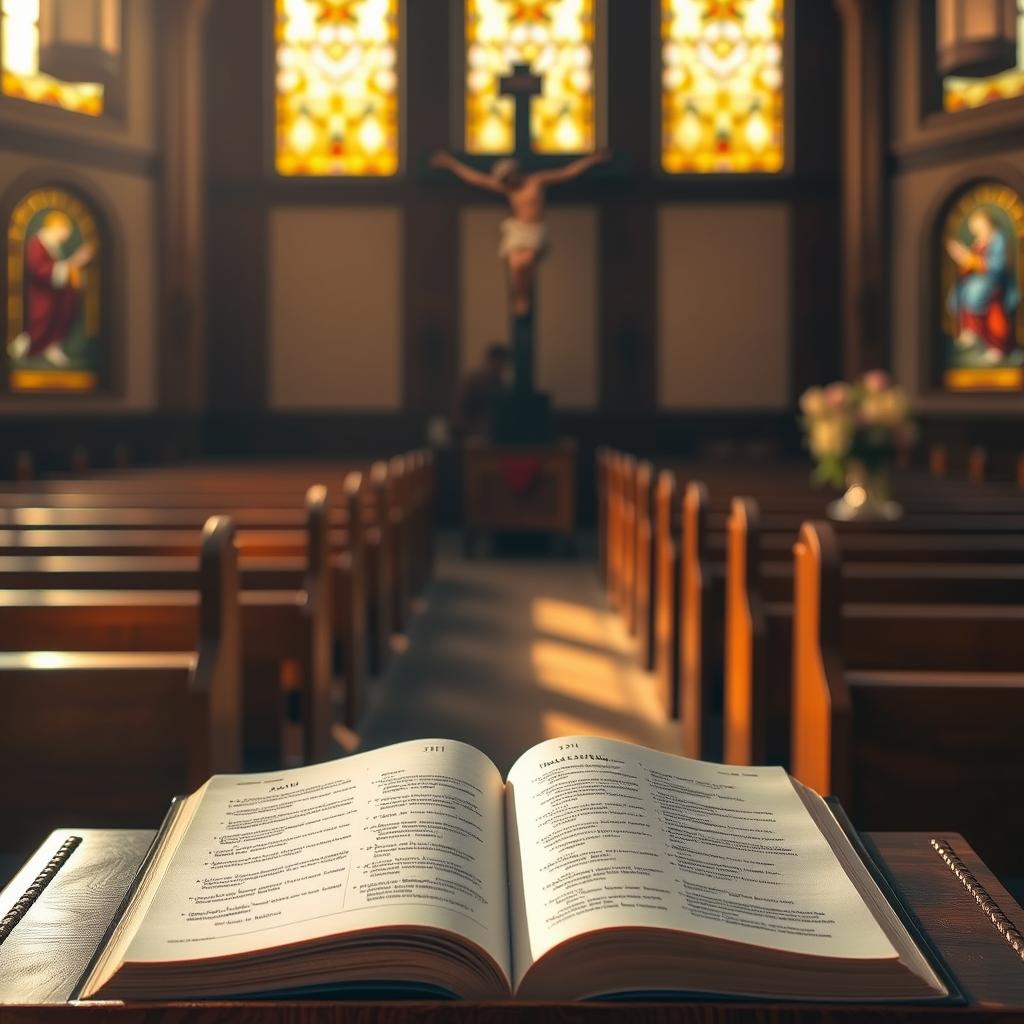
Understanding Psalm 31’s Call for Deliverance
Verses like “Be exalted, O Lord, above the heavens” (31:17) show a move from despair to faith. The psalmist’s journey from desperation to trust mirrors Jesus’ path to Calvary. This journey turns personal pain into a bridge to divine promises, showing that suffering is not the end.
Finding Comfort Amid Suffering
In verse 25, the psalmist says, “My soul clings to you,” highlighting trust in God’s love. This verse grounds the good friday message in hope. It gives congregations courage to face their challenges, echoing Jesus’ obedience. The psalm’s refrain becomes a shared prayer, uniting voices in trust during hard times.
Exploring Psalm 31: Reflecting on Suffering and Redemption
Psalm 31 is a powerful expression of humanity’s pain and trust in God. Jesus used its words on the cross, saying “Into your hands I commit my spirit”. This shows his faith in God’s promise of redemption. The psalm turns sorrow into a connection between our weakness and God’s kindness.
“The logic of the Cross is not death but love,” Pope Francis reminds us. This echoes Psalm 31’s assurance that even in suffering, God remains a refuge for the vulnerable.
The psalm’s call for help mirrors Jesus’ journey and invites us to see our struggles as part of a sacred path. The Catechism says suffering, caused by sin, can lead to holiness. Like the prodigal son, our trials may lead us to repent and return to God’s love. Paul teaches in 2 Corinthians 1:5 that suffering with Christ can lead to eternal glory.
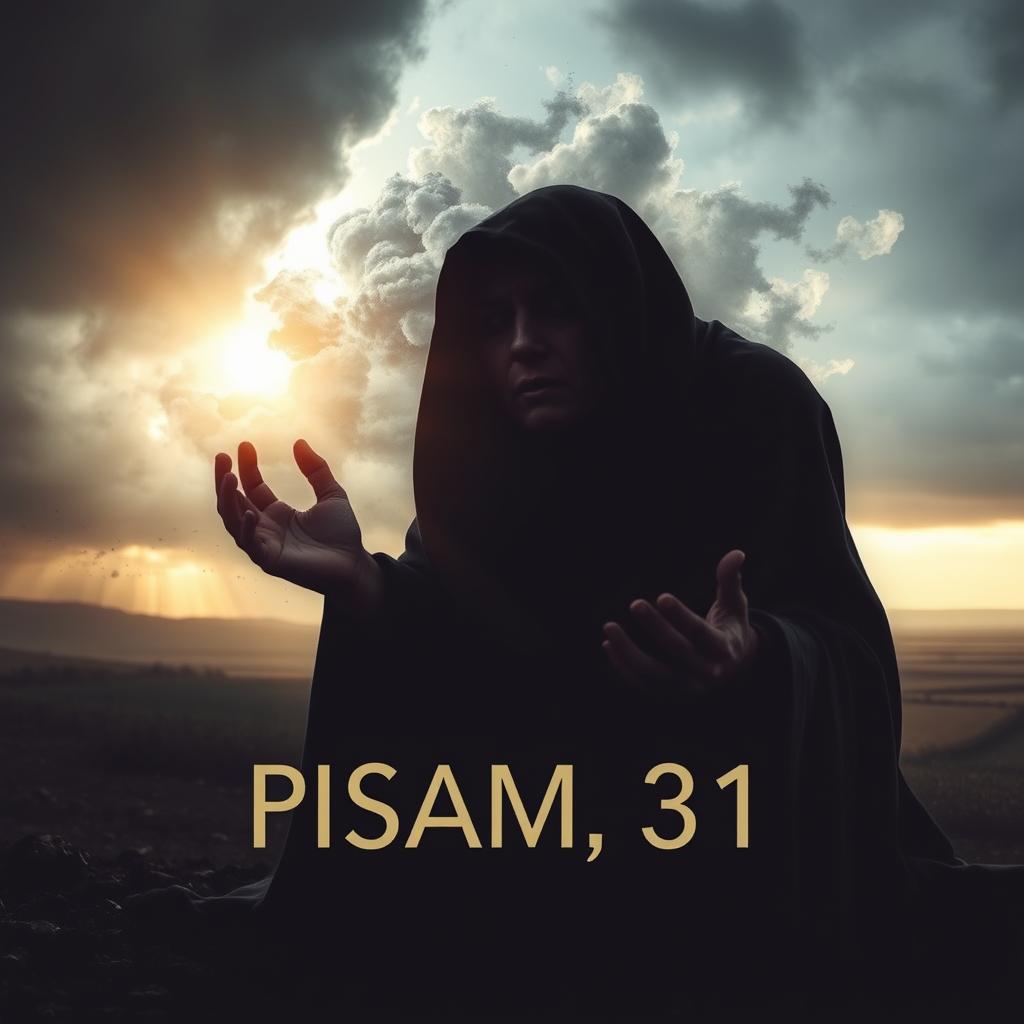
Benedict XVI said God asks for a “Yes” to love even in pain. Psalm 31 ends with a message of trust: “You have turned my mourning into dancing.” Its message is clear—suffering can unite us to Christ’s love. John Paul II taught that offering our pain to God makes us part of salvation’s story.
Bridging the Old and New Testaments: From Isaiah to Hebrews
Scripture shows a thread of hope that spans centuries. Isaiah’s words about a suffering servant echo in the Gospels. The prophecy in Isaiah 52:13-53:12 speaks of one who bears others’ sins, fulfilled in Jesus’ crucifixion. This connection is at the heart of Christian faith.
Connections Between Prophecy and Fulfillment
“Though he was harshly treated… he bore the sin of many” (Isaiah 53:4-5, NABRE).
The Passover lamb’s unbroken bones mirror Jesus’ crucifixion. Soldiers’ refusal to break his legs, as John’s Gospel tells, matches the prophecy. Hebrews 5:7-9 shows Jesus’ obedience, turning suffering into power for redemption. His pain connects the Old Testament with the New Covenant.

Transitioning from Suffering to Redemption
Jesus’ blood and water symbolize Baptism and Eucharist, rooted in his sacrifice. Isaiah’s servant, despite being despised, brings salvation, a theme Hebrews expands. Just as the Passover lamb’s blood saved households, Jesus’ blood marks God’s covenant.
This journey from ancient text to living truth invites reflection. The cross is where prophecy meets reality, and suffering turns to eternal hope. Every Good Friday, believers see divine love turn brokenness into redemption, as promised and fulfilled.
Hebrews’ Call for Compassion: Insights into Jesus’ Priesthood
The good friday sermon reveals Jesus as our compassionate High Priest. Hebrews 4:14-16 tells us to approach God boldly. We can do this because Jesus, our priest, understands our weaknesses.
“For we do not have a high priest who is unable to sympathize with our weaknesses, but one who in every respect has been tempted as we are—yet without sin.” (Hebrews 4:15)
This verse shows Jesus’ dual nature: divine and human. Hebrews 5:7-9 talks about how His obedience through suffering made Him our eternal salvation. His wounds remind us that compassion meets grace in pain.
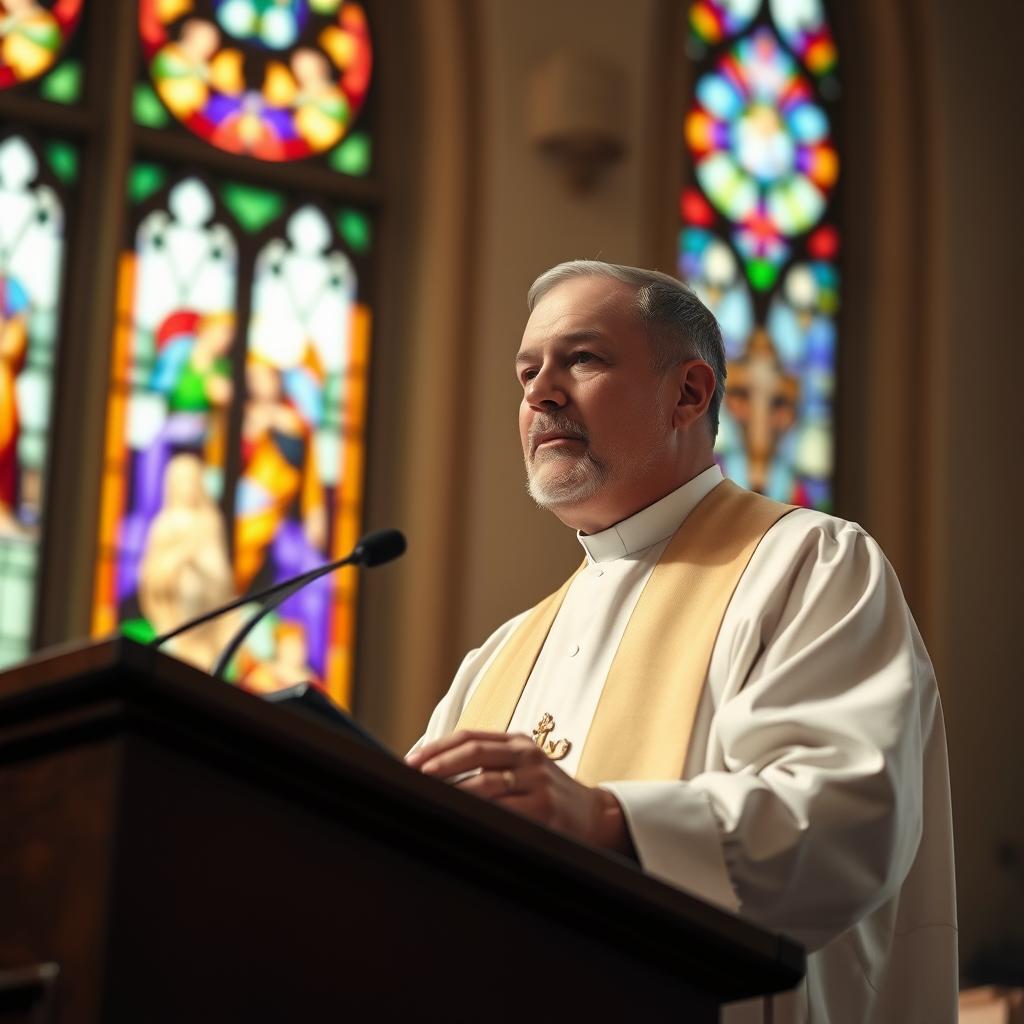
St. Andrew of Crete’s thoughts on the Cross show love’s victory over suffering. The good friday sermon should share this message. It calls us to follow Jesus’ example of love and service.
Preachers say true followers of Jesus give themselves like He did. The readings from Hebrews urge us to see service as worship. This connects with the Easter Triduum’s themes of sacrifice and renewal.
The good friday sermon connects scripture with action. By following Jesus’ example, we learn that faith is about helping others, just as He did.
Good Friday Homily, the Passion of Jesus
The passion of Jesus is a mix of pain and purpose. This mix shapes our view of suffering and salvation. It shows us that even in darkness, light can emerge.
Exploring the Dual Nature of Sacrifice
Jesus’ pain is shown in films like The Passion of the Christ. Actor Jim Caviezel’s acting in the scourging scene shows the true pain. Yet, Isaiah’s prophecy (Isa 52:13-53:12) changes our view: “He bore our sins,” turning suffering into a powerful tool for redemption.
“He was pierced for our transgressions,” Isaiah 53:5 declares. This verse connects the physical and spiritual, showing wounds as paths to healing.

The Role of the Homily in Spiritual Reflection
Homilies help us see beyond the cross’s harshness. Like the brass serpent in Numbers 21, looking at Christ’s death invites us to “look to him and live.” Thinking about his sacrifice, as 1 Peter 2:24 suggests, calls us to repentance and new life. The actors’ changes during filming show this transformation—suffering’s shadow reveals grace’s light.
Scriptures like Galatians 2:19 and Isaiah 53:11 remind us: sacrifice and resurrection are linked. The homily’s strength is in making this truth personal. It urges us to accept both the cost and the hope.
Gospel Narratives: A Detailed Look at John 18:1—19:42
The Gospel of John vividly shows Jesus’ last hours. It starts in the garden of Gethsemane and ends at Golgotha. The story begins with Judas’ betrayal and Peter’s denial, leading to the trial.
Pilate talks with the Judean leaders, showing a power struggle. Despite insults, Pilate unknowingly recognizes Jesus as divine.
John’s account is full of paradox. A shameful execution becomes a display of God’s glory. Jesus willingly gives up his life, saying, “No one takes my life from me. I lay it down of my own accord” (John 10:18).
Roman soldiers mock him, and the sky darkens. But when Jesus says, “It is finished” (John 19:30), his mission ends. He releases the Holy Spirit as promised.

John highlights Jesus’ regal act of bowing his head. This act shows both submission and kingship. The burial by Joseph of Arimathea and Nicodemus’s spices show God’s plan amidst cruelty.
These details make us think about suffering and obedience leading to redemption. The story calls us to follow Jesus, the world’s Savior.
Inspiration for Good Friday Sermon: Drawing from Sacred Readings
To inspire on Good Friday, sermons must blend Scripture’s deep meanings. Pastors can use Isaiah’s prophecies, the Psalms’ prayers, and John’s detailed account of Christ’s sacrifice. These texts lay the groundwork for preaching on the passion, connecting ancient wisdom with today’s challenges.
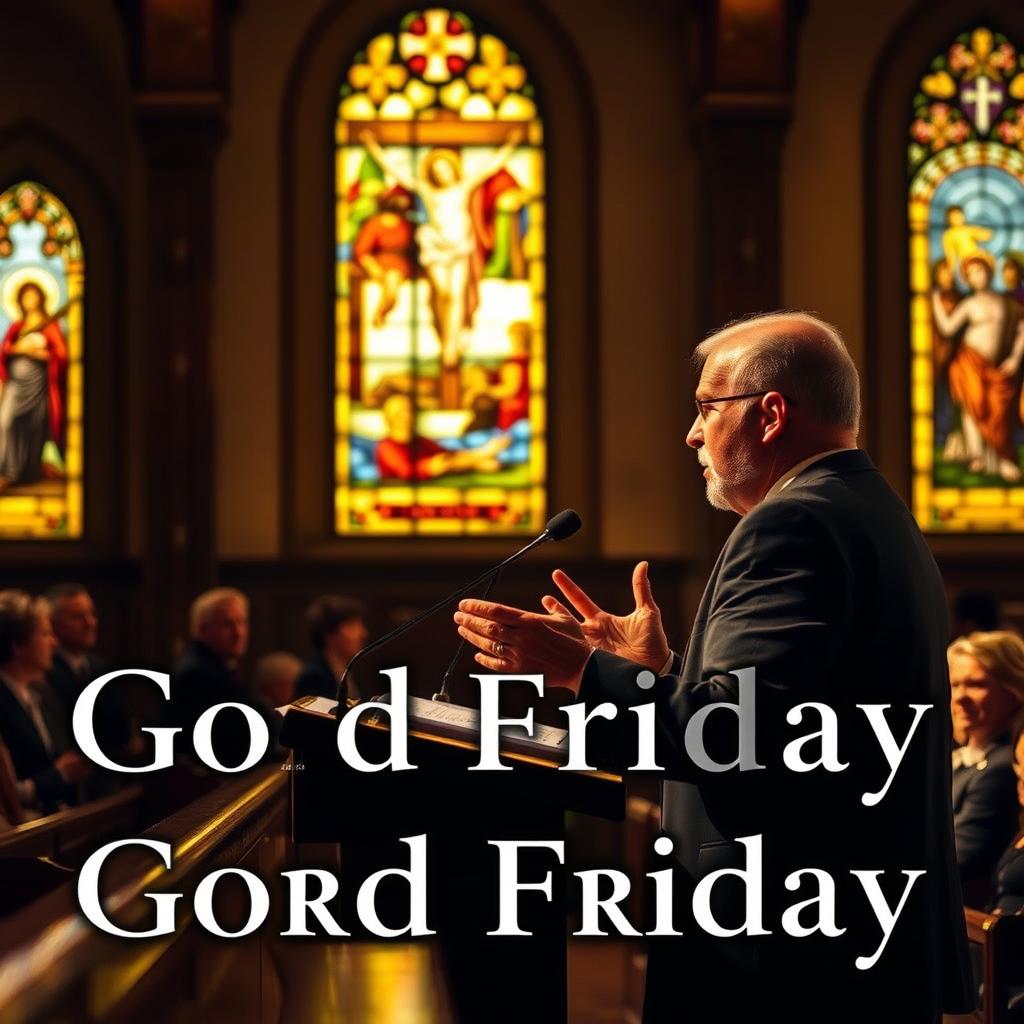
Incorporating Diverse Scriptural Insights
John’s Gospel shares Jesus’ last words, like “For God so loved the world” (John 3:16, NIV, 2011). This verse links divine love with human salvation. Isaiah’s Sufferer prophecy and Hebrews’ high-priestly imagery show Christ’s obedience completes God’s plan. Caravaggio’s Ecce Homo painting prompts preachers to ponder: How do we face our part in the story?
Crafting a Message That Resonates
“It is finished.”
Jesus’ final words (John 19:30) mark the end of redemption. Sermons must mix history with today’s issues. By focusing on Peter’s call to “die to sin” (1 Peter 2:24), we link physical crosses to spiritual fights. The Passion’s seven sayings, from forgiveness to victory, offer themes for today’s divisions. When preachers mix these, they honor tradition and speak to today’s hearts.
Effective preaching on the passion turns old stories into living hope. It encourages listeners to see the cross as both historical fact and a personal call to love.
Unpacking the Message of Jesus’ Passion and Crucifixion
At the heart of Jesus’ passion and crucifixion lies a message of love. This love goes beyond suffering. The Gospel stories show a divine plan where pain has a purpose.
In Jerusalem’s Church of the Holy Sepulchre, the sites of Calvary and the tomb are key. They remind believers that these events are the base of Christian hope.
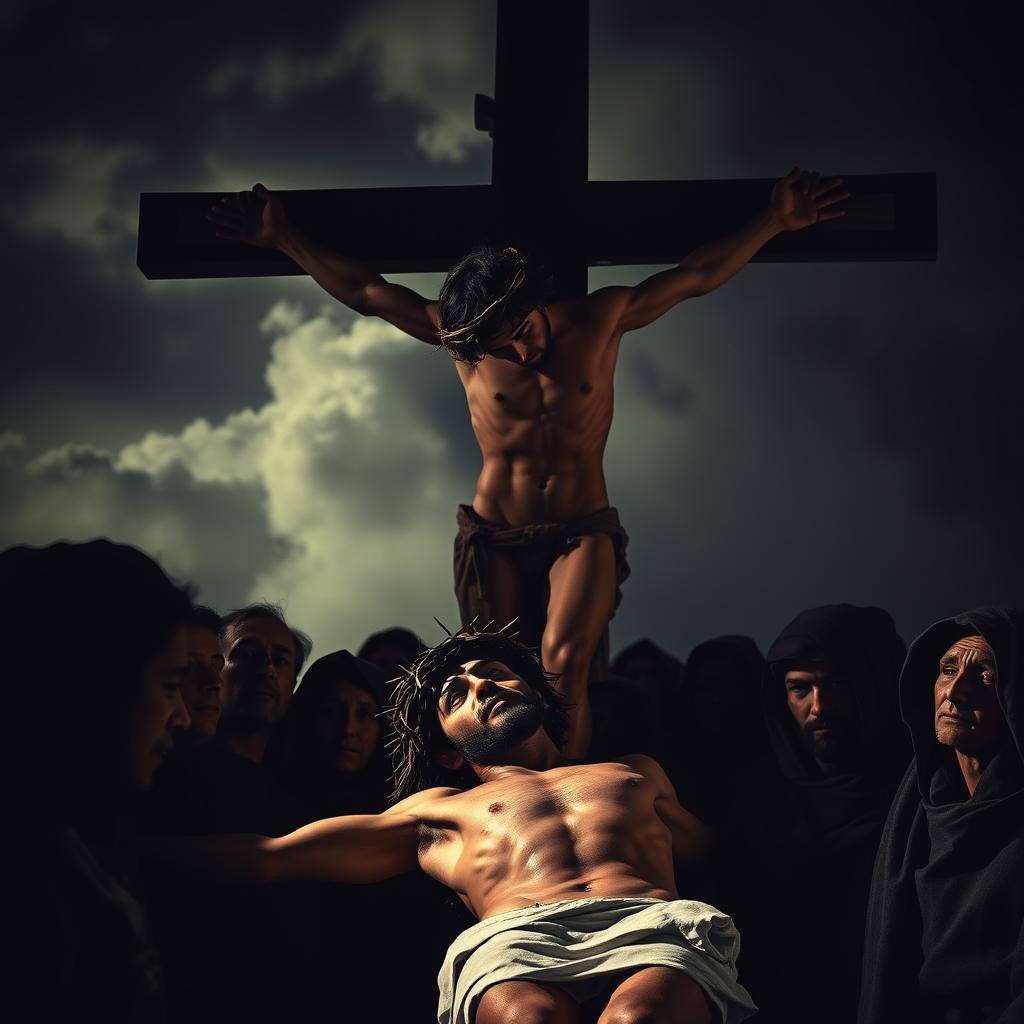
Jesus’ crucifixion shows a spiritual truth: sacrifice can turn despair into redemption. The global Christian community, over two billion strong, finds strength in this. Scott Hahn writes in Hope to Die, “Death is not an end but a bridge to resurrection.” This view changes sorrow to eternal victory.
“In His wounds, we see God’s choice to enter human pain, making it a path to wholeness.”
The Passion story makes us think about our struggles in relation to Christ’s journey. The crucifixion’s darkness doesn’t block the light of Easter; it makes it possible. This message calls followers to be resilient, trusting that hope stays even in tough times.
Good Friday Worship Service: Celebrating Redemption and Sacrifice
Good Friday worship service is a special time for people to come together. It’s a moment to reflect on Christ’s sacrifice and the hope it brings. The service includes solemn processions and symbols that help us understand the depth of Christ’s love.
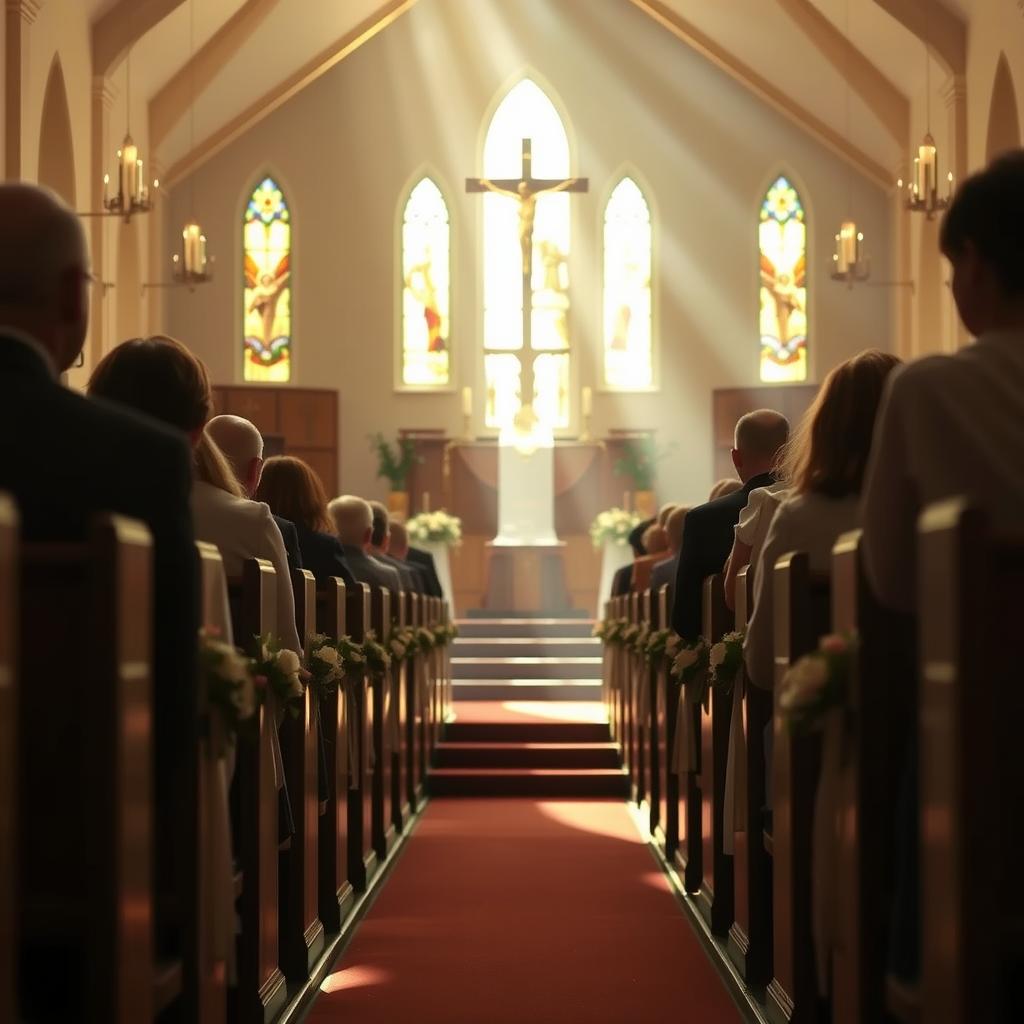
Elements of a Reflective Worship Service
The veneration of the cross is a key part of the service. People touch or kiss the cross, showing their devotion. The altar, without decorations, reminds us of Jesus’ humility.
The reading of John’s Gospel tells the story of the crucifixion. Priests highlight the “It is finished” phrase, showing the end of suffering. Communion, given from hosts saved since Holy Thursday, connects us to Christ’s sacrifice.
Enhancing Community and Personal Devotion
Acts like silent prostration and shared prayers bring us together. The homily might talk about Christ’s pierced side, a sign of grace. People leave in quiet, carrying the cross’s weight and the hope of Easter.
Reflective Meditations: Personal Connections to the Passion Story
Quiet moments of meditation let us see our struggles in Jesus’ story. A mother caring for a sick son or a widow grieving might see their pain in the suffering servant from Isaiah. The Gospel’s words come alive when we read them with our own trials, making ancient texts a mirror for today’s faith.

Think about the Responsorial Psalm 31: “Into your hands I commend my spirit.” These words comforted a cancer patient, reminding them of trust in unseen strength. A veteran’s wife found peace in the Stations of the Cross, seeing her husband’s sacrifice in Jesus’ path. Such meditations turn shared human experiences into sacred dialogues.
Start by reading John’s Passion account slowly, noting moments that stir your heart. Ask: How does my pain intersect with Christ’s? Pope Francis once said,
“The cross is not an end, but a promise of new life.”
Let these words guide you toward hope amid sorrow.
Use the Prayerful Reading of the Passion as a tool. Pause where the text resonates—maybe at Peter’s denial or Mary’s sorrow. Journal your reflections or join a “First Person Stations” group to explore how faith shapes personal struggles. These practices make the story of Good Friday a living conversation between past and present.
Preaching on the Passion: Crafting an Inspirational Good Friday Message
Good Friday homilies mix deep theology with stories we can all relate to. They often use ideas like Jesus’ death paying for our sins or freeing us from sin’s grip. These ideas come from
Strategies for an Impactful Homily
Stories of real people finding hope through forgiveness can inspire. For example, Margaret’s story shows how forgiveness can change lives, just like Jesus’ sacrifice. By connecting these stories, we see the power of redemption.
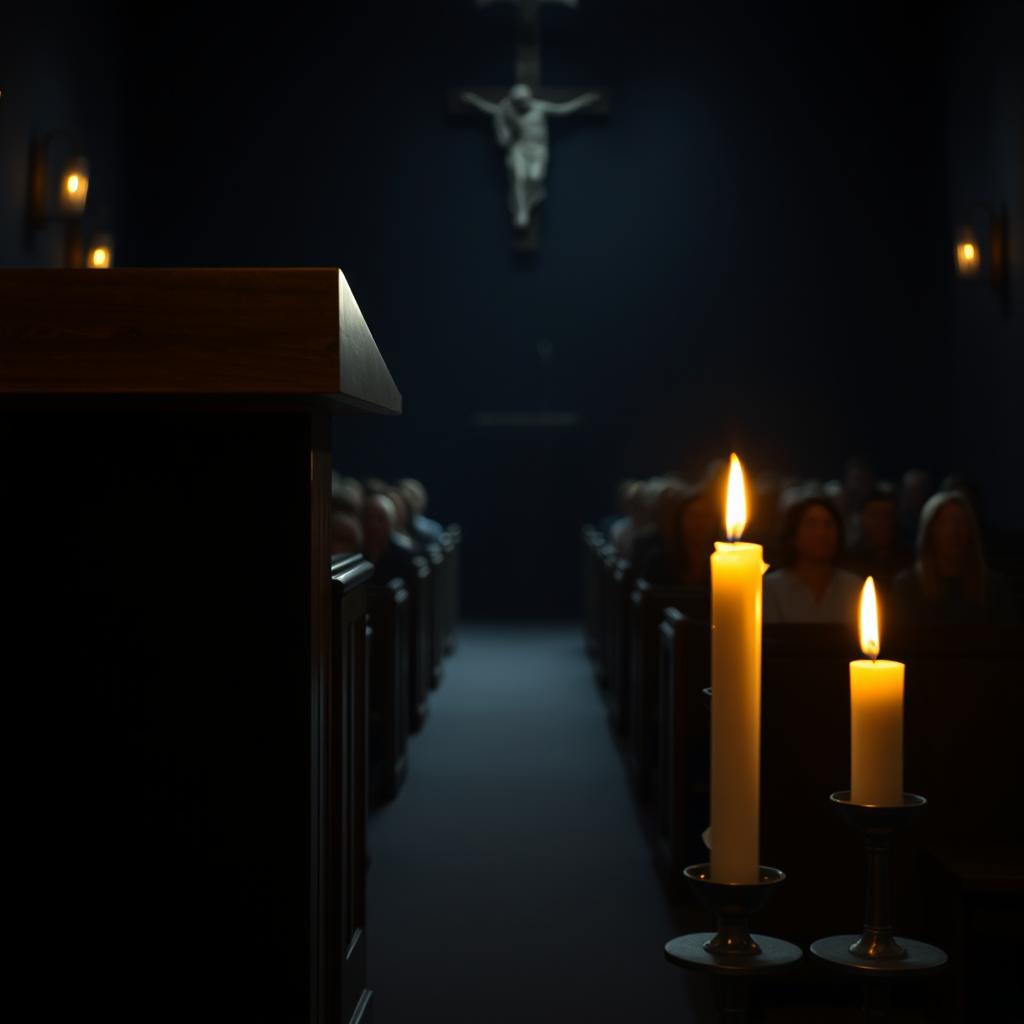
Connecting Historical Events with Modern Faith
It’s important to link old stories to our current struggles. The story of the unforgiving servant teaches us about the power of forgiveness. It shows that holding grudges blocks God’s grace.
Sharing in Christ’s sufferings, as Romans 8:17 says, leads to glory. Stories like Uncle Tom’s Cabin show how faith can lead to action.
“Forgive us our debts as we forgive our debtors” (Matthew 6:12)
Preachers should see the cross as a call to love and justice today. By connecting ancient truths to our lives, we invite people to live with gratitude and purpose.
Devotional Practices for Good Friday: Embracing Spiritual Renewal
Good Friday devotional practices help deepen faith through acts of reverence. Many people venerate the Cross by kissing it or tracing the Sign of the Cross. This tradition connects them to Christ’s sacrifice.
A 2023 study by the US Conference of Catholic Bishops found 78% of parishes see more people in Good Friday processions. Here, people carry crosses in silent prayer.
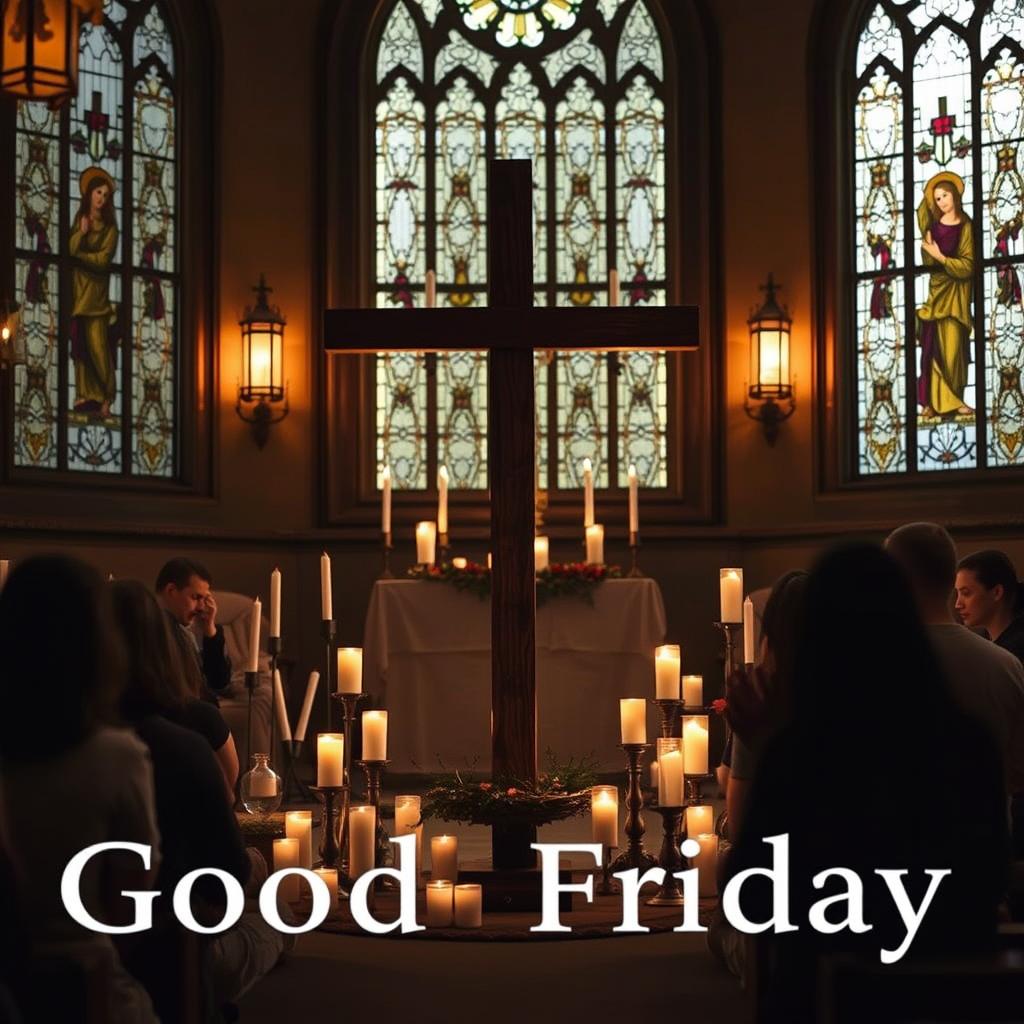
Personal devotions include reading Scripture, like Isaiah 53, or meditating on the Stations of the Cross. The homily “Good Friday (10 Minutes)” teaches making the Sign of the Cross as St. Bernadette did. Each touch of hand to forehead is a prayer for strength.
Retreat programs, like “Walking with the Lord in Holy Week,” offer 30 minutes of journaling. They mix modern practices with ancient symbols.
Acts of charity boost spiritual growth. Communities often organize food drives or visitation ministries, showing Christ’s compassion. The Feast of the Exaltation of the Cross on September 14 continues this journey. It shows how Good Friday’s themes of sacrifice last all year.
Carrying the Flame Forward: A Call to Embrace the Passion and Hope
On April 7, 2023, the Good Friday liturgy at St. Peter’s Basilica showed how Christ’s sacrifice is timeless. Pope Francis and Cardinal Cantalamessa’s homily urged believers to let the Passion’s light shine on today’s challenges. By embracing the Cross, faith becomes a daily choice, not just a ritual.
The Easter Vigil’s Lucernarium, with its Easter fire and Paschal Candle, symbolizes this enduring hope. It urges followers to bring light into dark places.
Jesus’ example encourages believers to live resurrection hope every day. The Vigil’s Exultet hymn and Baptismal rites remind us to renew our promises of love and justice. Compassion becomes a tangible witness—feeding the hungry, standing with the marginalized.
Just as the Paschal Candle burns through darkness, so too must faith guide our actions. The liturgical journey from Passion to Resurrection demands lifelong commitment, not just annual observance.
May the words of Cantalamessa and the Vigil’s rituals inspire daily acts of mercy. Let baptismal vows shape our decisions, turning faith into service. The Resurrection’s promise is not a distant hope but a present power to transform lives.
Carry the flame of Good Friday forward—walking in Christ’s footsteps, fueling hope, and kindling love in a world still in need of redemption.
FAQ
What is the significance of Good Friday in Christianity?
Good Friday marks the crucifixion of Jesus Christ. It’s a day for reflection on his sacrifice for humanity’s redemption. Believers see it as a time of sorrow and hope, as they ponder Christ’s suffering.
How can I prepare for a Good Friday worship service?
To prepare for Good Friday, start with quiet reflection and prayer. Meditate on Jesus’ passion and be ready to join in communal rituals. Reading scripture about Jesus’ passion can also enrich your experience.
What are some recommended devotional practices for Good Friday?
Recommended practices include personal prayer and meditation on Christ’s passion. Reflective reading of the Gospels and acts of compassion are also key. These practices help deepen your connection to Good Friday’s significance and the power of sacrifice.
How do the readings from Isaiah connect to Good Friday?
Isaiah’s readings offer prophetic insights into the suffering servant, foreshadowing Jesus’ passion. This connection shows how Christ’s suffering fulfills Old Testament prophecies. It invites believers to reflect on suffering and redemption.
What are key elements to include in a Good Friday sermon?
A Good Friday sermon should include scriptural insights and the emotional depth of the passion narrative. It should also have contemporary applications. The goal is to inspire contemplation of Jesus’ sacrifice and encourage acts of compassion.
How can Psalm 31 enhance my understanding of Good Friday?
Psalms 31 expresses human emotions of distress and hope, mirroring Christ’s passion. Reflecting on its themes of deliverance and divine support can offer solace. It can deepen your faith during Good Friday.
What is the importance of the homily on Good Friday?
The homily on Good Friday guides personal meditation and community worship. It helps believers confront the crucifixion’s tragic elements while embracing resurrection hope. It’s a powerful space for reflection and faith growth.
Catholic Weddings: Timeless Traditions, Personalized Celebrations
